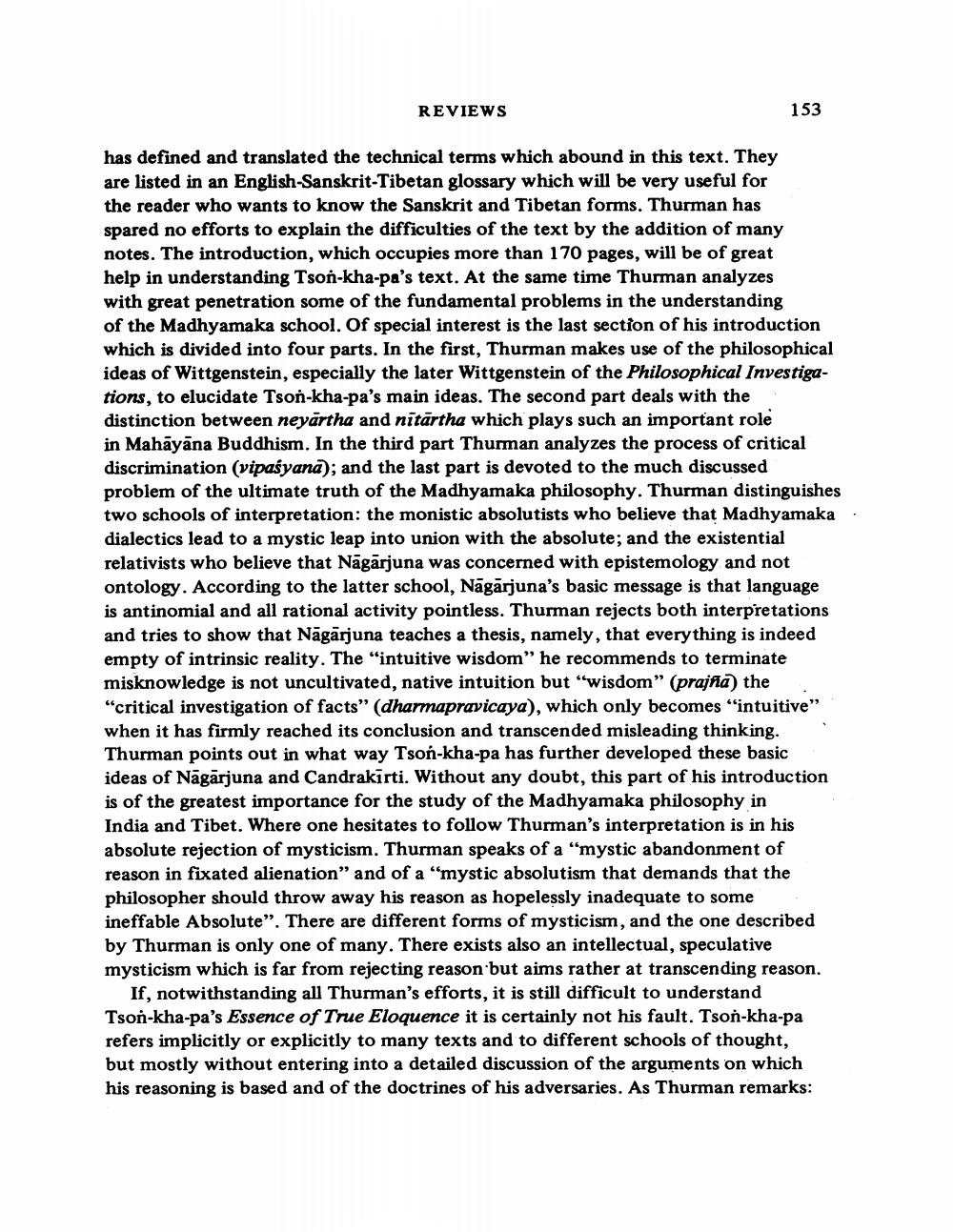Book Title: Book Reviews Author(s): J W De Jong Publisher: J W De Jong View full book textPage 2
________________ REVIEWS 153 has defined and translated the technical terms which abound in this text. They are listed in an English-Sanskrit-Tibetan glossary which will be very useful for the reader who wants to know the Sanskrit and Tibetan forms. Thurman has spared no efforts to explain the difficulties of the text by the addition of many notes. The introduction, which occupies more than 170 pages, will be of great help in understanding Tson-kha-pa's text. At the same time Thurman analyzes with great penetration some of the fundamental problems in the understanding of the Madhyamaka school. Of special interest is the last section of his introduction which is divided into four parts. In the first, Thurman makes use of the philosophical ideas of Wittgenstein, especially the later Wittgenstein of the Philosophical Investigations, to elucidate Tson-kha-pa's main ideas. The second part deals with the distinction between neyartha and nitārtha which plays such an important role in Mahāyāna Buddhism. In the third part Thurman analyzes the process of critical discrimination (vipaśyana); and the last part is devoted to the much discussed problem of the ultimate truth of the Madhyamaka philosophy. Thurman distinguishes two schools of interpretation: the monistic absolutists who believe that Madhyamaka. dialectics lead to a mystic leap into union with the absolute; and the existential relativists who believe that Nagarjuna was concerned with epistemology and not ontology. According to the latter school, Nāgārjuna's basic message is that language is antinomial and all rational activity pointless. Thurman rejects both interpretations and tries to show that Nagarjuna teaches a thesis, namely, that everything is indeed empty of intrinsic reality. The "intuitive wisdom” he recommends to terminate misknowledge is not uncultivated, native intuition but “wisdom" (prajña) the "critical investigation of facts" (dharmapravicaya), which only becomes "intuitive" when it has firmly reached its conclusion and transcended misleading thinking. Thurman points out in what way Tson-kha-pa has further developed these basic ideas of Nagarjuna and Candrakīrti. Without any doubt, this part of his introduction is of the greatest importance for the study of the Madhyamaka philosophy in India and Tibet. Where one hesitates to follow Thurman's interpretation is in his absolute rejection of mysticism. Thurman speaks of a "mystic abandonment of reason in fixated alienation" and of a "mystic absolutism that demands that the philosopher should throw away his reason as hopelessly inadequate to some ineffable Absolute". There are different forms of mysticism, and the one described by Thurman is only one of many. There exists also an intellectual, speculative mysticism which is far from rejecting reason but aims rather at transcending reason. If, notwithstanding all Thurman's efforts, it is still difficult to understand Tson-kha-pa's Essence of True Eloquence it is certainly not his fault. Tson-kha-pa refers implicitly or explicitly to many texts and to different schools of thought, but mostly without entering into a detailed discussion of the arguments on which his reasoning is based and of the doctrines of his adversaries. As Thurman remarks:Page Navigation
1 2 3 4 5 6
